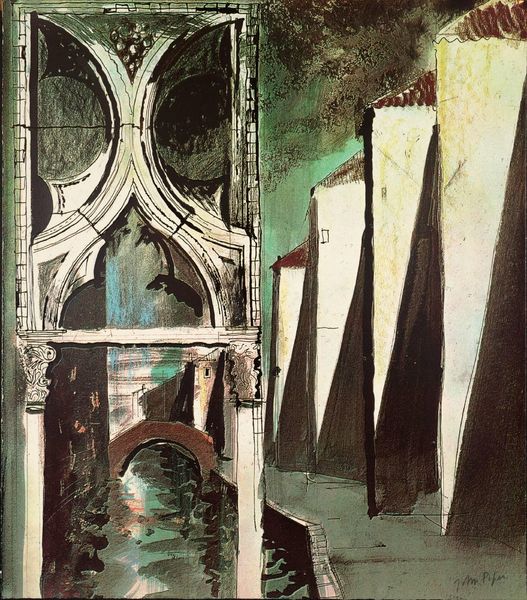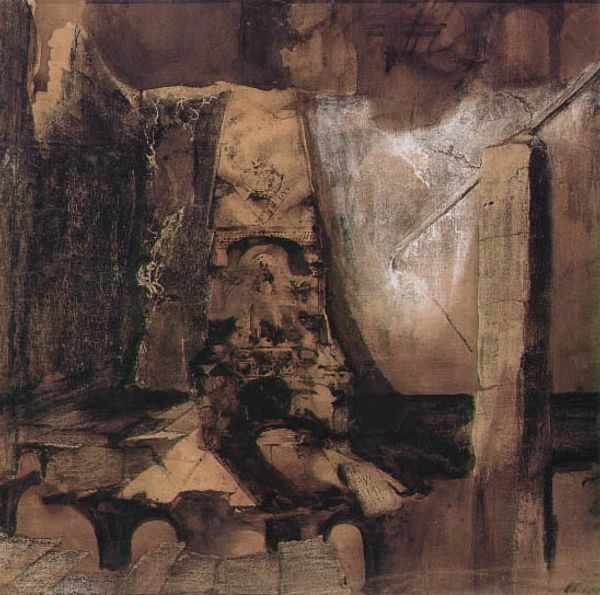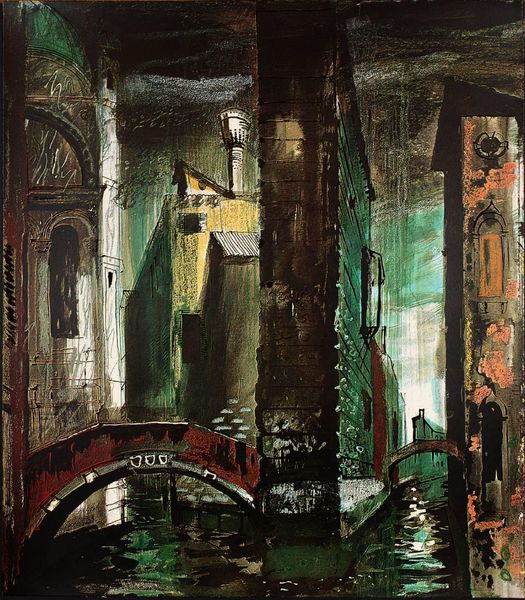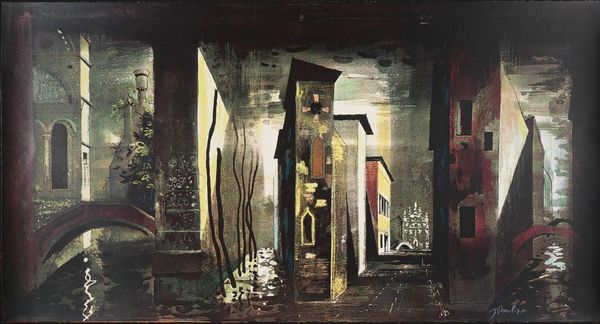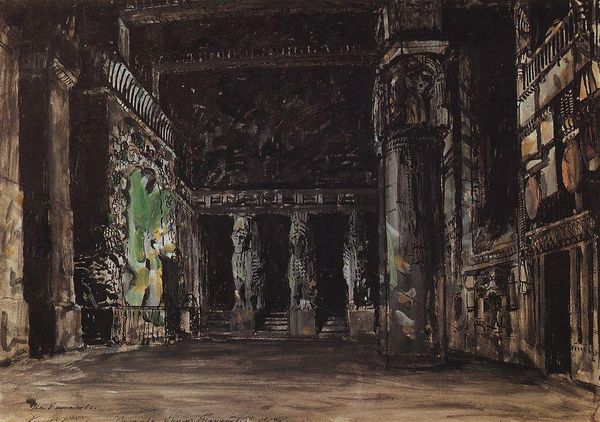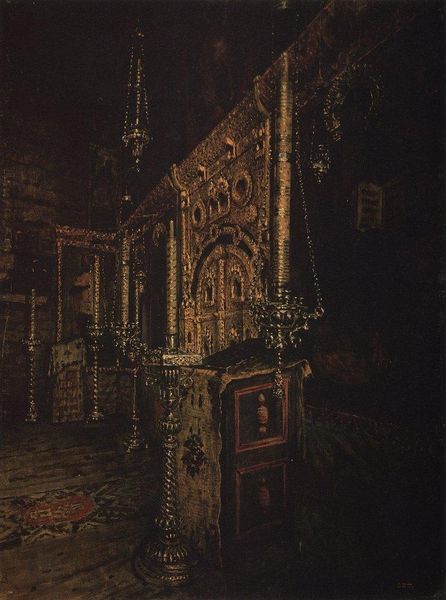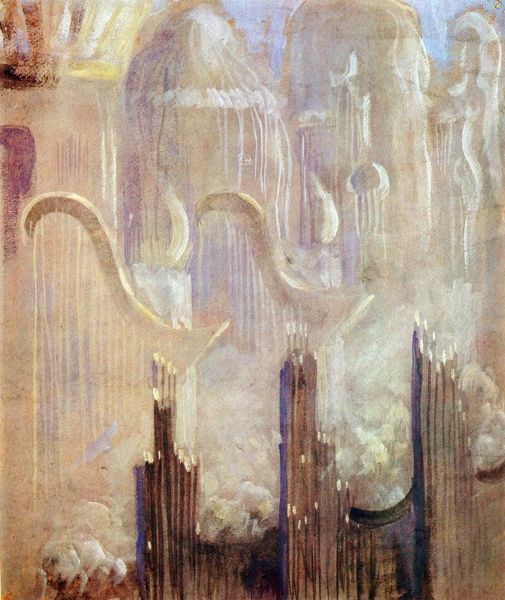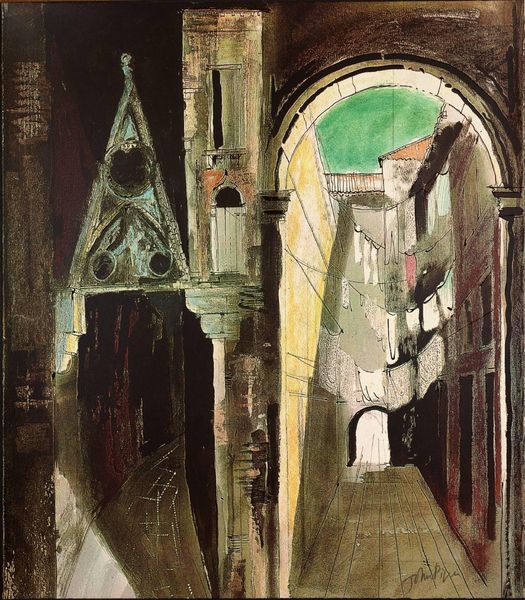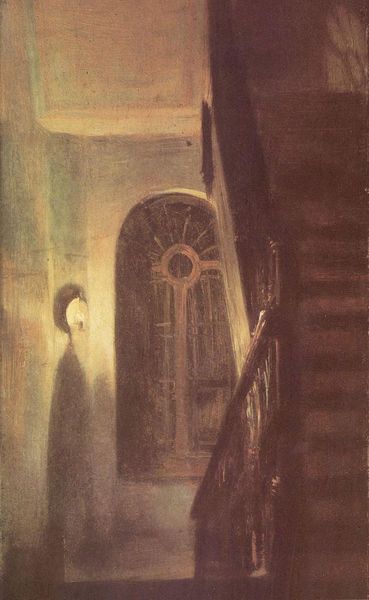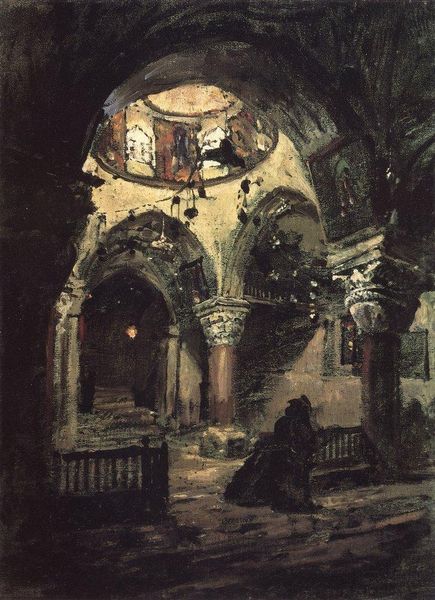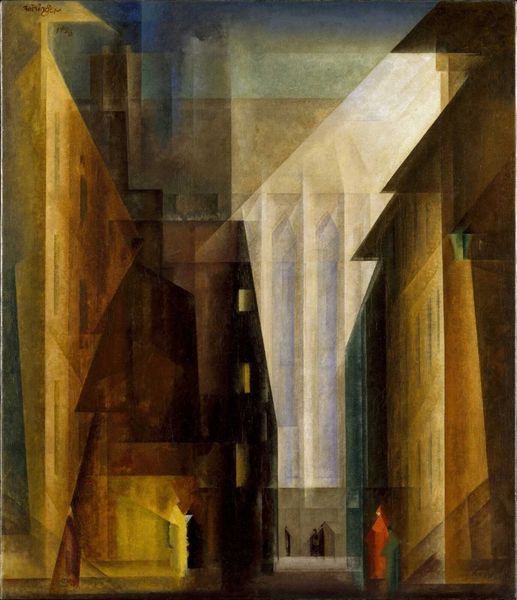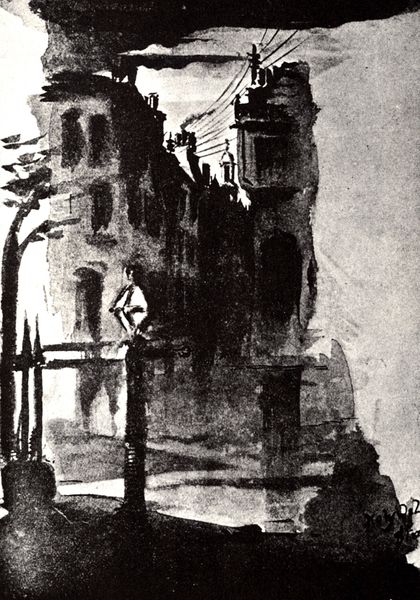
Dimensions: image: 654 x 1051 mm
Copyright: © The Piper Estate | CC-BY-NC-ND 4.0 DEED, Photo: Tate
Curator: This is John Piper's "Chambord Rooftops," held here at the Tate. It captures the elaborate architectural details of the Château de Chambord. Editor: It's really quite dark, almost oppressive. The texture looks rough, with heavy inks, making the castle feel less like a monument to royalty and more like a haunted stage set. Curator: Interesting observation. Piper’s work often explores the collision between romanticism and ruin, reflecting on the historical narratives embedded within such grand structures and how they are implicated in systems of power. Editor: Thinking about the materials, the ink and the paper itself, it seems like a deliberate choice to depict these opulent structures with such rough, almost industrial means. Curator: Absolutely. It invites us to consider how the means of representation affect our understanding of history and wealth. Editor: It makes one consider the weight of the past, the physical labor that built it, and the paper it's printed on. Curator: It's a reminder that even the grandest structures are products of human labor and socio-political dynamics. Editor: Indeed, the materiality reveals histories beyond the romantic facade.
Comments
tate 8 months ago
⋮
http://www.tate.org.uk/art/artworks/piper-chambord-rooftops-p05047
Join the conversation
Join millions of artists and users on Artera today and experience the ultimate creative platform.
tate 8 months ago
⋮
Piper first painted the famous chateaux of the Loire in 1971, the year he visited Venice to make designs for Benjamin Britten's opera Death in Venice. Also at this time his dealers, Marlborough Fine Art, were asking for paintings on a big scale, and he took an interest in grand buildings with flamboyant architecture. The roof pavilions at Chambord corresponded to Piper's original designs for Death in Venice, which used a group of tall, revolving structures. Here he experiments with a directional stage lighting, as if seen by night. This is one of the largest of his screenprints. Gallery label, July 2008
